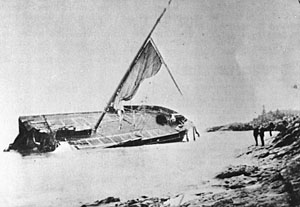|
ALGOMA BUILT: 1883 |
.jpg)
The Algoma was one of three steel passengers and freight liners built in 1883 under the direction of Henry Beatty,
who was the general manager of the Canadian Pacific Marine operations. The vessels had all Canadian names.
Each vessel was almost identical.
The Algoma crossed the Atlantic Ocean from Scotland to Montreal in hurricanes. It was in Montreal where the 3
sisters were cut in two to allow them to pass through the locks of the St. Lawrence River and the Welland Canal
while on their way to Port Colborne on Lake Erie. 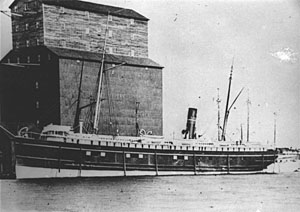
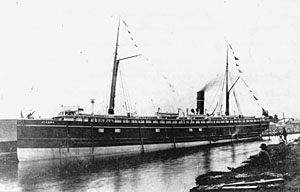
Early that morning at 6 a.m. the ship broke in two and the bow disappeared into the black water. In the complete
disorder and confusion more that 31 lives were lost in the wreckage. The remaining crew and passengers clung on
the canted afterdeck desperately to a single lifeline which was their only means of survival. At day light three brave
crewmembers made the 60-foot swim to shore in the freezing water but they could not find a way to ferry those left
on board. The remaining survivors made their way to shore on the Sunday morning when the gale had subsided.
They were able to find a small raft. There happened to be a fisherman in the area that found them hanging on a
thread for dear life in the freezing temperatures. On the Monday the survivors were taken off Greenstone Island by
the crew of the Athabasca, a sister ship of the Algoma.
In the spring of 1884, the 3 vessels were put in to service running from Owen Sound on Georgian Bay to Port
Arthur at the head of Lake Superior. On November 6th, Algoma left the Sault Canal and entered Lake Superior
under the confident direction of Captain Moore. Algoma raced along all day at a good speed and into the night
with both engines steaming while her sails were drawn into the wind. She was a sight for sore eyes.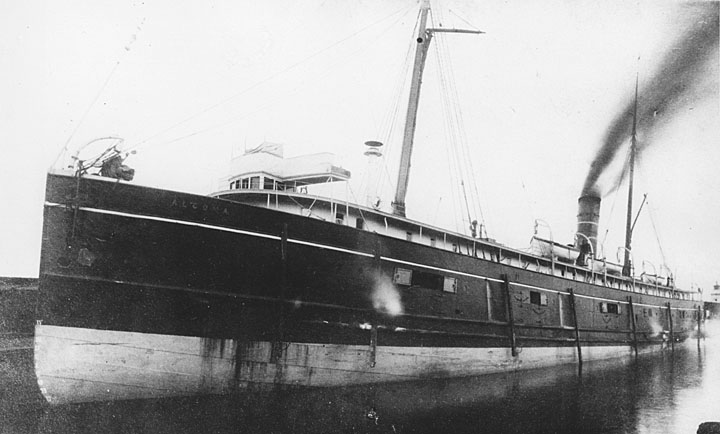
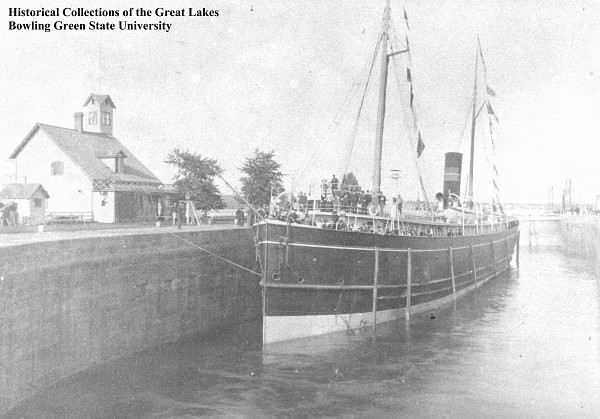
The weather on the lake had changed very quickly because in the middle of the night, at 4:00 a.m. on the Saturday
morning the Algoma found herself pitching and rolling uncontrollably in a ferocious gale. The ship was being
pounded by heavy rain, sleet and snow which made visibility next to impossible therefore Captain Moore had no
choice but to turn the liner into the open Lake until the present situation dramatically improved. As the steamer
swung around to the open water, there was a bone-chilling sound of a crash of steel on rock. Unfortunately the
rock they hit was Greenstone Island rock. The rudder got smashed and the boat careened swiftly out of control
dizzily like a child's toy being thrown. Then huge waves lifted the Algoma up and down and repeatedly dropped
her on the rocks just off of Isle Royal. 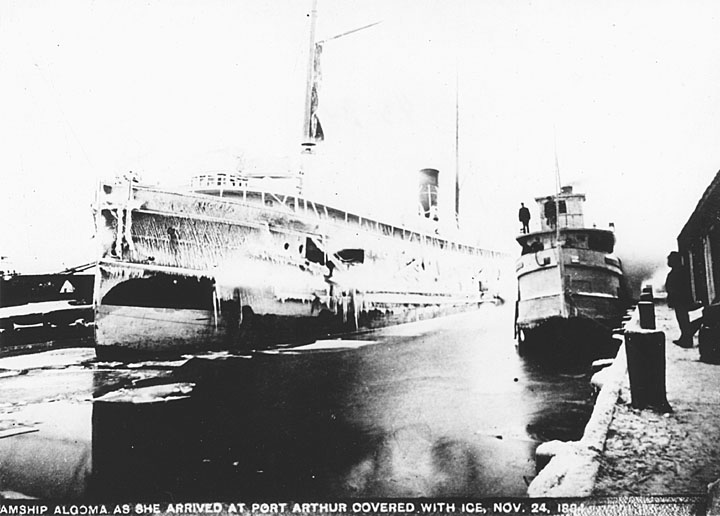
Early that morning at 6 a.m. the ship broke in two and the bow disappeared into the black water. In the complete
disorder and confusion more that 31 lives were lost in the wreckage. The remaining crew and passengers clung on
the canted afterdeck desperately to a single lifeline which was their only means of survival. At day light three brave
crewmembers made the 60-foot swim to shore in the freezing water but they could not find a way to ferry those left
on board. The remaining survivors made their way to shore on the Sunday morning when the gale had subsided.
They were able to find a small raft. There happened to be a fisherman in the area that found them hanging on a
thread for dear life in the freezing temperatures. On the Monday the survivors were taken off Greenstone Island by
the crew of the Athabasca, a sister ship of the Algoma. ![]()
